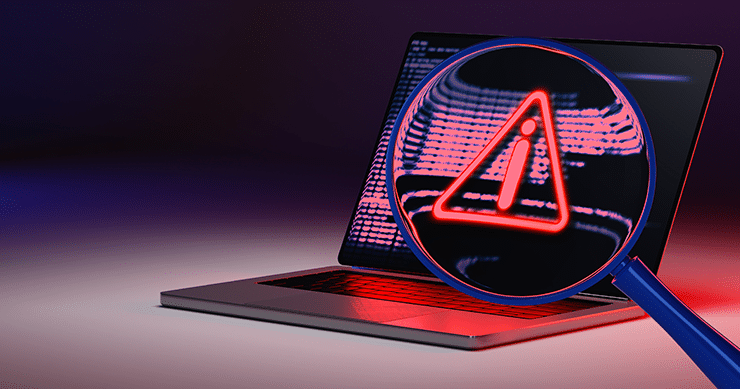The growing body of stringent data privacy laws has pushed for better methods of evidence collection and audit trails to record activity that doubles as evidence for certification audits. Even without the goal of certification, audit trails on their own improve internal controls, close security gaps, and verify the accuracy and completeness of implemented security processes. Audit trails have the added benefit of being able to prove, in case of a cyber incident or privacy breach, that an organization did all they were legally required to do, thereby avoiding heavy regulatory consequences.
An audit trail provides the history and evidence to prove a particular activity, control, or event. Without a complete audit trail, the ability to trace an activity, transaction, or event from start to completion is lost and conclusions cannot be appropriately attained or a certification achieved.

What Is the Purpose of Audit Trails?
An audit trail is an overarching term used to describe the sequential logging of details around a process. By recording and logging each phase of a lengthy process, the trail saves records of key details for review and easy access in the future. Audit trails vary in complexity, but share a common feature: they track and store actions and events in chronological order.
What is an Internal Audit?
Internal audits assess the current state of controls, governance processes, risk management strategies, and compliance status. An internal audit, usually carried out by the company, is a great way of identifying security gaps before they are discovered by an external audit or during the certification process. By compiling an audit trail as you prepare for your internal audit, you will have easy access to the documentation and event logs that evidence your security status. This trail will be put to use during an external certification audit as well.
What is An External Audit?
Compliance with some international or federal standards will require your organization to systematically address information security issues using a risk-based approach. An independent third party will evaluate and assess if you have properly implemented the standard’s requirements. Certification or attestation of compliance with international standards like ISO 27001 or SOC 2 demonstrate that your organization has been certified by an independent and competent third party. Often, an external audit will involve document collection and on-site visits to see implementations in action. A well-marked audit trail will help prepare you for success in your external audit.
How an Audit Trail Can Help You Avoid Hefty Fines
Once an organization is certified, it will be periodically assessed by regulators to ensure that audit trail security controls are working efficiently and requirements are being upheld as directed by the standard. When auditors or regulators discover compliance violations, having an audit trail cyber security plan in place can make all the difference.
For example, under the GDPR, every company that operates a business in the EU must comply with its strict standards to protect the personal data and the privacy rights of EU residents. Companies that are found uncompliant are fined by regulators. One of the main requirements of the GDPR is that an organization must have evidence collection and event reporting procedures in place in the event of a breach.
If a company that provides services to EU citizens suffers a data breach and that organization isn’t in compliance with the GDPR’s evidence collection rules, it can be fined up to €20 million ($22.07 million) or 4% of the annual revenue of the prior financial year, whichever is greater. A company that has been diligent about evidence collection and audit trails will likely not be hit by massive fines because it will be easy to prove that appropriate controls and processes were in place to protect consumer data. and security measures in place to protect people’s data.
Automated GRC tools enable organizations to track, manage, and assess information security compliance and remediate risk. These GRC tools simplify evidence collection, placing compliance milestones on the road to security.
Why Are Audit Trails So Important?
Auditors rely heavily on evidence and documentation to support their conclusions. The evidence acquired is a major factor in the outcome of your audit. After the tremendous investment in the certification and compliance process, laying the ground for a solid audit trail is the least you can do to ensure your efforts will be smooth and successful.
Start Getting Value With
Centraleyes for Free
See for yourself how the Centraleyes platform exceeds anything an old GRC
system does and eliminates the need for manual processes and spreadsheets
to give you immediate value and run a full risk assessment in less than 30 days
Evidence of Controls In An Audit Trail
To test the operational efficiency of internal controls, your auditor or certifier will examine evidence that your organization has compiled during the execution of the control. No matter what, an auditor cannot rely on your word or declaration that you implemented a control. They need proof!
It’s not that you’re a suspicious client and not worthy of trust; auditors wouldn’t be doing their job if they were to trust their clients. An auditor goes by this maxim: If it’s not documented, it didn’t happen.
One of the biggest difficulties a business facing an audit would undoubtedly confront is producing enough evidence. The controls that are required for the audit are often already in place in a lot of organizations. However, they fail to provide and preserve the proof that would be required to convince an auditor that the control was carried out. Especially in the case of SMBs and startups, there simply isn’t enough awareness and no pressing need to develop and maintain this documentation until the compliance auditing process is looming.
I’ll describe a common scenario to demonstrate an example of an audit trail.
As part of the SOC 2 audit, want-to-be-compliant companies must implement a control that ensures that “Prior to issuing system credentials and granting system access, the entity registers and authorizes new internal and external users whose access is administered by the entity. For those users whose access is administered by the entity, user system credentials are removed when user access is no longer authorized.” When a new employee is onboarded, you need to implement a process for issuing them their first-time credentials. You might use a random password generator to set their first password or require them to change that password upon their first log-in.
However, before any of that happens, the critical piece to this criterion is that you have a way to identify and document this process so that an auditor will be convinced that this control is in place. Signing a form or sending an email detailing this process would be an example of control evidence in this case.
Audit Your Work As You Do It
As corporate infrastructure grows, compliance requirements increase in demand and complexity. Scaling compliance against this complex background necessitates more frameworks, controls, regulations, and, of course, evidence for audit trails.
While managing the process manually with spreadsheets and following up through email is possible, Centraleyes offers a better way to navigate the compliance maze and audit your work as you do it. Technology makes a huge difference in audit evidence collection and management, facilitating tasks like storing documentation, creating forms, and following up on third-party risk assessments.
By automating compliance to enable audit trails and address overlapping regulations with other frameworks, you’ll simply eliminate the issues that accompany compliance done the conventional way—via manual screenshots, excel spreadsheets, and long meetings.
An automated solution for increasing compliance maturity removes repeated tasks, saving time and money while seamlessly cross-referencing controls and requirements across many frameworks. The result is a simplified process that produces data that is always correct and current.
Start Getting Value With
Centraleyes for Free
See for yourself how the Centraleyes platform exceeds anything an old GRC
system does and eliminates the need for manual processes and spreadsheets
to give you immediate value and run a full risk assessment in less than 30 days





